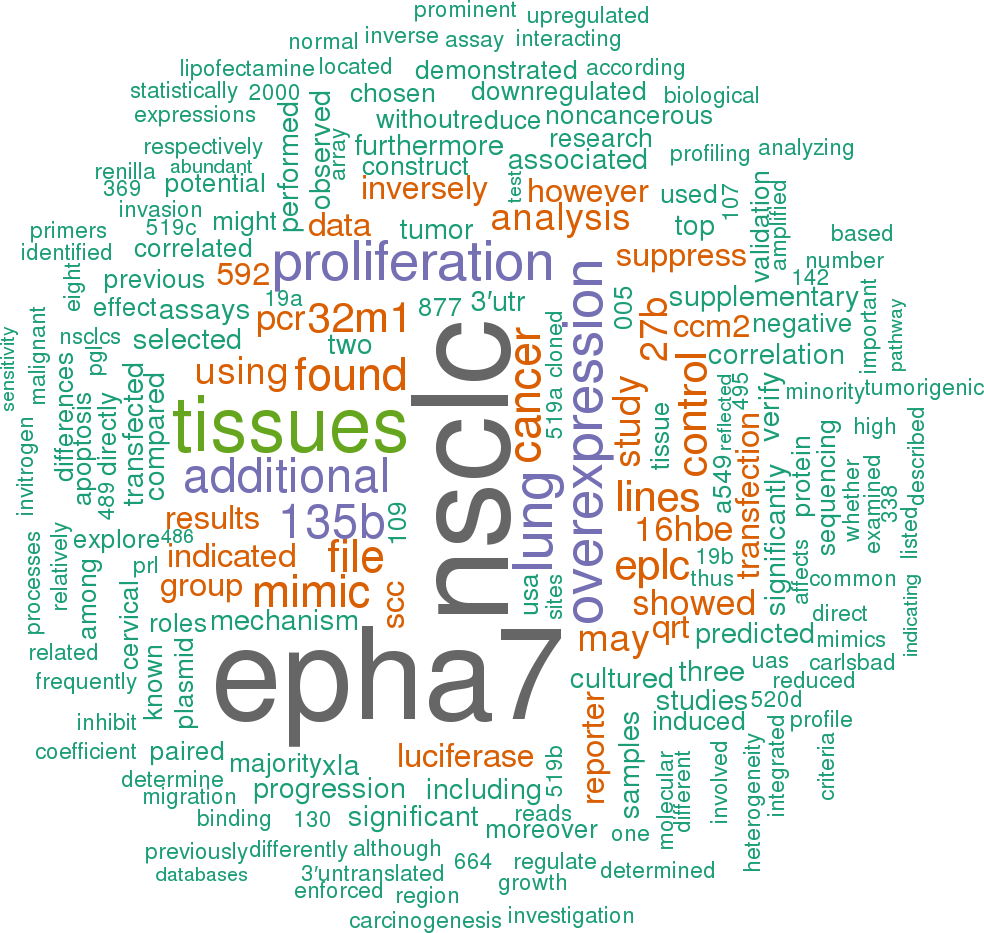Accession
MI0005769
Symbol
HGNC:
MIR944
Description
Homo sapiens
hsa-mir-944 precursor miRNA mir-944
Gene
family?
family?
RF01024;
mir-944
Summary
Caution, this is an AI generated summary based on literature. This may have errors. ?
MIR944 is a microRNA that has been identified as overexpressed in patients with non-small cell lung cancer (NSCLC) relative to healthy controls, with a more than fourfold increase in expression [PMC5627048]. It has been implicated in modulating sensitivity to chemotherapy in solid tumors [PMC8602334]. The MIR944 promoter is transcriptionally regulated by ΔNp63, particularly during keratinocyte differentiation, with ΔNp63 binding to the promoter maintained during this process [PMC4551945]. Co-regulators such as TFAP2A and TFAP2C have been identified as supporting the binding of ΔNp63 to the MIR944 promoter, suggesting a complex regulatory mechanism that maintains miR-944 expression during epidermal differentiation [PMC4551945]. The chromatin architecture of the MIR944 genomic region is open in keratinocytes, facilitating transcription initiation [PMC4551945]. Conservation analyses indicate that MIR944 is evolutionarily young and primate-specific, suggesting its recent emergence and potential specialized function in these species [PMC4551945]. Overall, MIR944 appears to be an important regulatory miRNA with its own promoter within the intron of ΔNp63 and may play a role in epidermal differentiation and cancer biology [PMC4551945][PMC6510770[PMC6510770].
Literature search

12 open access papers mention hsa-mir-944
(94 sentences)
(94 sentences)
Sequence
4462
reads,
101
reads per million, 61 experiments
guuccagacacaucucaucugauauacaauauuuucuuaaauuguauaaagagAAAUUAUUGUACAUCGGAUGAGcugugucugggau
((((((((((((.((((((((((.(((((((.((((((............)))))).))))))).)))))))))).))))))))))))
((((((((((((.((((((((((.(((((((.((((((............)))))).))))))).)))))))))).))))))))))))
Structure
u a u aaauu
guuccagacaca cucaucugau uacaaua uuucuu g
|||||||||||| |||||||||| ||||||| ||||||
uagggucugugu GAGUAGGCUA AUGUUAU AAAgag u
c C U aaaua
Annotation confidence
Not enough data
Do you think this miRNA is real?
Genome context
chr3: 189829922-189830009 [+]
Disease association
hsa-mir-944 is associated with one or more human diseases in the Human microRNA Disease Database
| Disease | Description | Category | PubMed ID |
|---|
Mature hsa-miR-944
| Accession | MIMAT0004987 |
| Description | Homo sapiens hsa-miR-944 mature miRNA |
| Sequence | 54 - AAAUUAUUGUACAUCGGAUGAG - 75 |
| Evidence |
experimental
cloned [1] |
| Database links |



|
| Predicted targets |



|
References
|



